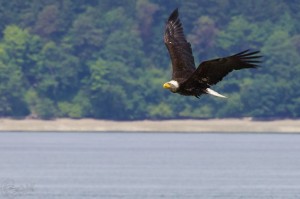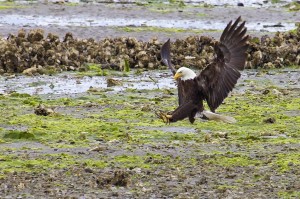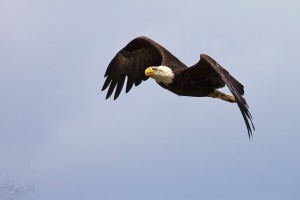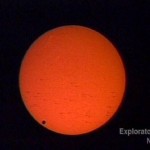Today is the transit of Venus across the Sun. To properly view this once in a lifetime event, I rented a Canon 100-400mm f/4 – f/5.6 lens from lensrentals.com. I also went and purchased some solar film to prep the lens for a nice shot of Venus transiting across the sun. I had my scopes, eyepieces, camera gear et al ready to go. In fact, as I type this it’s sitting on the floor in front of me. Such a sad predicament as I look at my optical toys and then through my window. The Pacific Northwest has dealt a blow to my dreams of viewing this rare opportunity. Well, I can’t get all depressed or angry about it.
So, this brings me back to the lens I rented. I didn’t want to leave it sit inside without trying it out. Let me back up here a bit. I have lived in the Pacific Northwest for well over 6 years. I have heard of an interesting gathering of American Bald Eagles at Seabeck, WA. This last Sunday, I decided to visit this place and see what the all the hubbub was about. After Sunday (and a torturous long 10 minute car drive…), I can not fathom as to why I never visited this wondrous place before. Shear insanity for a proclaimed nature photographer.
The location in question is the Big Beef Creek Estuary near Seabeck, WA. A bridge crosses over this mudflat with ample parking on both sides of the road. Perfect for a photographer to set up a tripod and his/her longest lens. Traffic can get heavy at times, but this is mainly due to motorists slowing down to gawk at the multitude of tripods and long lenses – white and black. When I first saw it, I had thought there was some kayaking or canoeing event in progress.
I pulled in between two cars and began to set up. After opening my hatch on my car, I realized I made a critical error. No tripod. Welp, good thing I live so close. After coming back with the proper gear, I set up my tripod amongst the multitude of photographers and began scanning the horizon. It was around 10:00AM and the tide was pulling out still for another 30 minutes.  I didn’t see any eagles in flight and started thinking why all these photographers were out here just chatting it up with nothing to shoot. It was then I noticed there were over 10 eagles sitting out in the mud flats. There were crows, swallows, herons and a multitude of other birds flying about, but the eagles were roosting in the flats and occasionally walking. After about 5 minutes of this “hanging out” eagles started taking off and others started landing. Apparently it’s a seasonal thing as the Eagles have just come out of mating season and are awaiting the return of salmon. In the meantime there is an influx of Bullhead fish which the eagles congregate on. It begins in mid to late May and ends around the beginning of July.
I didn’t see any eagles in flight and started thinking why all these photographers were out here just chatting it up with nothing to shoot. It was then I noticed there were over 10 eagles sitting out in the mud flats. There were crows, swallows, herons and a multitude of other birds flying about, but the eagles were roosting in the flats and occasionally walking. After about 5 minutes of this “hanging out” eagles started taking off and others started landing. Apparently it’s a seasonal thing as the Eagles have just come out of mating season and are awaiting the return of salmon. In the meantime there is an influx of Bullhead fish which the eagles congregate on. It begins in mid to late May and ends around the beginning of July.
For the next 5 hours I had a blast photographing these majestic birds doing the most interesting and sometimes hilarious flying, stealing, playing and landing. There turned out the be a bit shy of 25 eagles out there that day and apparently it was a low day. After some conversations with other photographers, there have been upwards to about 100 eagles crowding the sky giving photographers the difficult proposition of trying to find one in the crowd.
I ended up closing up shop around 2PM once the tide covered up the mudflats. Most of the eagles by that time had returned to their nests or perches in the trees. I intend to go out again soon to try to get more wonderful shots.
In the slideshow below, I captured two eagles competing for a fish that was caught by one of the eagles. I was in awe as they locked claws and performed some intense aerobatics. I hope you enjoy the photos as much as I enjoyed capturing it!
Some things I learned while out there:
1. The best time to shoot is when the tide begins to roll inwards. I showed up an hour before peak low tide. If you go to www.saltwatertides.com – you can select the Seabeck tide times to plan your outing.
2. While low tide exposes the inlet’s bed, extreme low tide puts the eagles out of reach for a 400mm lens – except when they are flying near the road. As the tide comes in, it forces the eagles to land closer and closer to the road and also the eagles appeared to be more active.
3. I was informed that most activity happens during very low tides so look for negative footage tides.
I scoured the internet for any more information on they whys and whatnots but information is very scant on this interesting local phenomena. If you have anything to add by all means please do. I hope this helps!

3 Comments
My wife and I are hoping to come out to the Hood Canal to see the Eagles and other birds. We will be coming from Houston, and any information about the best times in the Spring to see this phenomenon would be most helpful. Thanks
Mike Bradshaw
Hi Rob,
Very nice bald eagle photos. Do you have the GPS location where you have photos? I am planning fly from california to seabeck on Jan. any suggestion is great appreciated. Thx.
I love the shots in your post. Thanks for sharing your experience in taking pictures of agile creatures such as birds.
http://www.dslrpundit.com